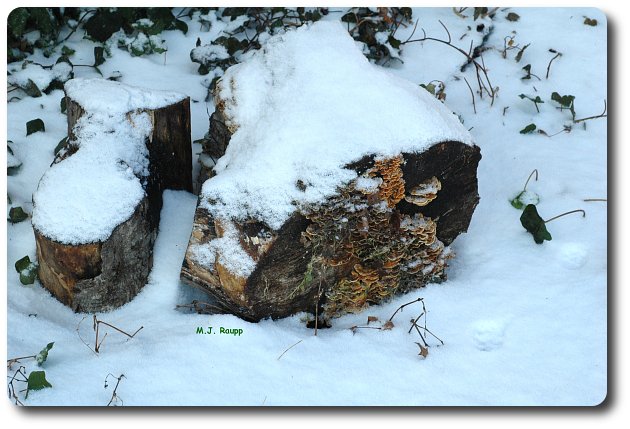This week we leave the tropical warmth of Belize and return to the chilly weather of late winter in Maryland. With the threat of more winter weather on the way and my fuel reserves dwindling, this weekend was a time to split firewood. As I reached the bottom of the woodpile and turned over a water soaked and partially decomposed log, I was amazed to see a small colony of bess beetles lumbering beneath a log. Bess beetles are also known as patent leather beetles due to their shiny deep brown color.
Faith and buggora, a clan of bess beetles!
Adult bess beetles are important participants in the great circle of life. No, they do not occupy an exalted place at the top of the food chain like Mufasa, the Lion King. They sit near the bottom of the heap along with fungi and bacteria where they help decompose wood. Adult bess beetles use strong jaws to gnaw and ingest wood. After being processed in the beetle's digestive system and deposited back in the colony, the microbe-packed wood-poops are consumed by beetle larvae. The microbes contained in the leavings of the adult beetles are particularly important for young larvae that require microorganisms to help them digest and obtain nutrients from tough plant structures such as lignin and cellulose. Upon plucking one of the beetles from its wintry retreat, and warming it up in the kitchen, I was intrigued to hear it squeak. Bess beetles are able to produce sound by rubbing their wings across a rasp-like structure on the upper surface of their back just beneath the hard wing covers. This form of sound production is called stridulation.
Many beetles such as the milkweed longhorned beetle we met on July 3, 2006 in "Hooray for the red, white, and blue!" stridulate. The larvae of bess beetles are somewhat unique in that they also stridulate by rubbing together two sections of their legs. Several authors suggest squeaking sounds enable both larvae and adults to communicate with others in the decomposing wood. One account indicates that larvae follow the calls of adults in the colony. Perhaps this is a way for parents to direct their babies to some yummy food. Other scientists believe the calls may frighten would-be predators. To learn the true nature of the call of the bess beetle, I made a recording of the sound. By playing the sound backward at very slow speed, the beetles could clearly be heard singing "when Irish eyes are smiling, sure 'tis like a morn in spring". I took this as a sure sign that spring is not far off. Let's hope so. I hope you had a Happy St. Patty's Day.
References:
Information for this Bug of the Week came from a paper written by L.E. Gray in 1946 entitled "Observations on the life history of the horned Passalus". For another account of bess beetles, please visit the following web site.
http://entweb.clemson.edu/museum/beetles/local/btle14.htm


